 Fanpop
Fanpop
Wednesday, March 30, 2011
The Most Dangerous Illusion
'Our Most Dangerous Illusion Is that We Can Control Nuclear Energy'
Well. I'm not going to argue that there aren't dangers associated with nuclear energy. Having followed the efforts to determine a site for a US nuclear waste repository for about 30 years now, having been frustrated with the process from the outset, and seeing that we still haven't succeeded in finding a satisfactory location, I'm well aware of the many dangers that can arise from nuclear power.The issue I have with the overly dramatic statement above though is that the person quoted seems to be utterly unaware that other power sources have higher associated risks. Though I linked this chart a week and half ago without reproducing it, I think I'll be more explicit here:
Energy Source Death Rate (deaths per TWh)The biggest danger of nuclear power is that it and its effects are invisible; without some special devices- which hadn't even been invented a century ago- there is no way to know what your exposure is. The fact that it is imperceptible to an untrained and unequipped person means that the only response possible is panic. Run Away! You can't see it, you can't fight it, you can't protect yourself from it, so the only sensible option is to be somewhere else.
Coal – world average 161 (26% of world energy, 50% of electricity)
Coal – China 278
Coal – USA 15
Oil 36 (36% of world energy)
Natural Gas 4 (21% of world energy)
Biofuel/Biomass 12
Peat 12
Solar (rooftop) 0.44 (less than 0.1% of world energy)
Wind 0.15 (less than 1% of world energy)
Hydro 0.10 (europe death rate, 2.2% of world energy)
Hydro - world including Banqiao) 1.4 (about 2500 TWh/yr and 171,000 Banqiao dead)
Nuclear 0.04 (5.9% of world energy)
On the other hand, the background knowledge required to deal safely with radiation (in day to day circumstances, not in a reactor) is not that extensive or demanding, the equipment to detect and measure it isn't that expensive, and it's easy to use, so from my perspective, I just don't find radiation or nuclear power all that intimidating. I worked for the better part of a year at Oregon State's research reactor, doing neutron activation analysis on a potential ore body in Africa. I'm no expert, but I know the safety precautions, I know how to keep from being contaminated, and I know what to do if I do find myself contaminated.
On the other hand, I have no idea what the excess mercury load in western Oregon from coal burning is. I suspect it's pretty low compared to what I grew up with in southeast Ohio, but I get the willies wondering what's coming out of the ground water there now, after another half century of intense coal power generation. Not to mention the excess uranium and thorium- two elements that are naturally concentrated by and bound to organic carbon, and which are simply broadcast to the open environment after combustion. Or alternatively, piled up in immense reservoirs of fly ash waste, then ignored until the dam fails. Which amounts to the same thing.
Another note I received this morning from the Union of Concerned Scientists focused on the same issue:
In short, my response to the Spiegel interview is exasperation. Here we have a person who probably has very little knowledge about, or experience around, radioactive materials, and who has a predictable panic response to them. He is advocating for an end to human use of such materials- again, predictably. But- and once more, predictably- he does not propose realistic alternative sources of energy.Help Protect the Public from Toxic Air Pollution
Dear Lockwood,Toxic air pollutants from power plants—mercury, lead, arsenic, and others—are linked to health problems such as cancer, heart disease, neurological damage, birth defects, asthma attacks, and even premature death. Mercury, for example, is a potent neurotoxin that poses a threat to fetal and infant brain development. And coal plants are far and away the greatest source of mercury air emissions in the United States.
Shockingly, there are currently no national limits on the amount of mercury and other toxic pollutants that power plants can spew into the environment. This gap in our public health protections is all the more disturbing since the Clean Air Act required the Environmental Protection Agency (EPA) to start regulating toxic pollutants more than two decades ago. Thankfully, in mid-March, the agency finally proposed a mercury and air toxics rule, which will limit hazardous air pollution from coal- and oil-fired power plants.
Even though the new standards are affordable and would deliver enormous health benefits, some energy companies and their allies in Congress are already working to block or weaken them.
The EPA is now accepting comments on its proposed mercury and air toxics rule. The agency needs to hear from concerned citizens like you, who want a strong rule that protects the public from these dangerous pollutants.
Take Action Today!
Sincerely,
Kate Abend
National Field Organizer
UCS Climate and Energy Program
I am not a strong advocate for nuclear power generation; I feel it has many shortcomings. On the other hand, so does every other power source we have developed or have contemplated. To argue that one specifically should be eliminated because it's dangerous, while overlooking the dangers inherent in others, seems ignorant at best and dangerously naive at worst.
The "most dangerous illusion" is not that "we can control nuclear energy." It is that uninformed opinion, generated without consideration of the pros and cons of other options, is a useful springboard for fruitful policy decisions.
Tuesday, March 29, 2011
Tuesday Tits
see more Memebase After Dark
Sunday, March 27, 2011
Don't Panic. Waitaminit.... No, Panic
The estimated overall maximum biological effect from the trace amounts of radiation currently detected in Oregon from the events in Japan is about 0.000160 mrem per day. To put this into perspective, a person would need to be exposed to this level all day, everyday for over 100 years to equal the exposure from ONE chest x-ray.Cue frantic screaming in 3... 2... 1...
If you're really, really concerned, an overdose of potassium iodide will simply kill you outright, so you won't have to worry about radiation poisoning.
Sunday Funnies
 Criggo
Criggo Alphaville
Alphaville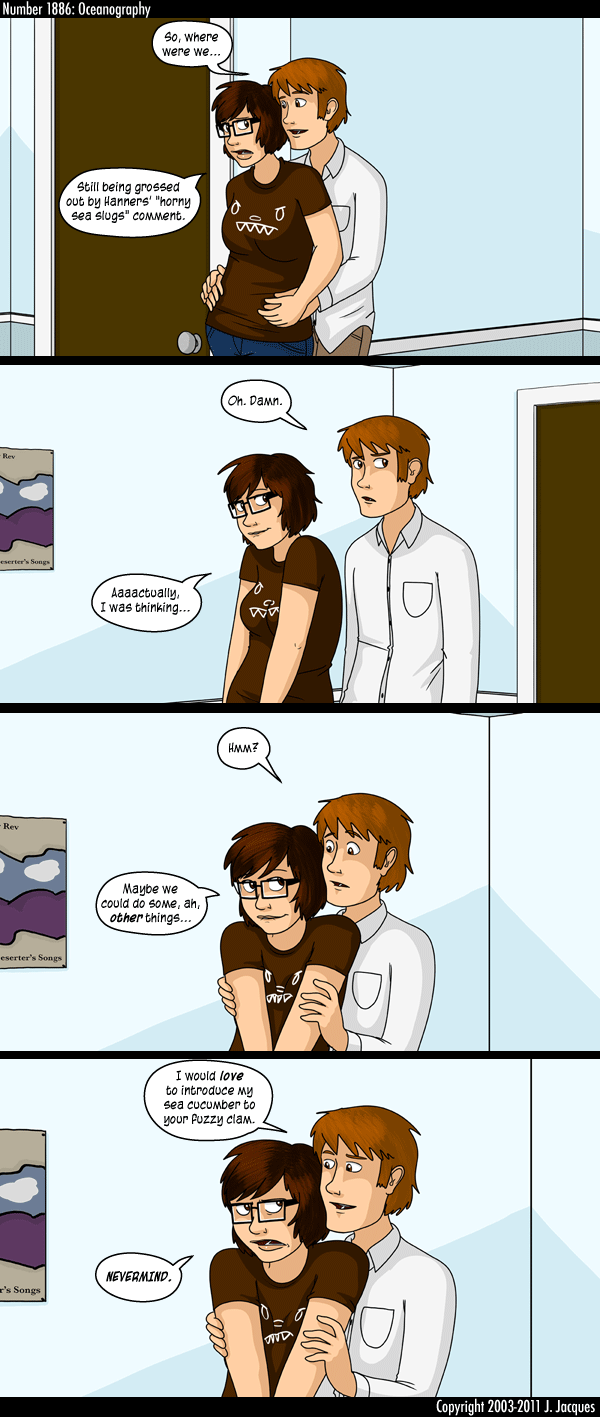 Questionable Content, titled "Oceanography."
Questionable Content, titled "Oceanography." Cyanide and Happiness
Cyanide and Happinesssee more Very Demotivational
 The Daily What
The Daily What What Would Jack Do?
What Would Jack Do?see more Comixed
 Sober in a Nightclub
Sober in a Nightclub Doghouse Diaries
Doghouse Diaries Abstruse Goose
Abstruse Goose Wondermark
Wondermarksee more Monday Through Friday
 Blue Gal
Blue Gal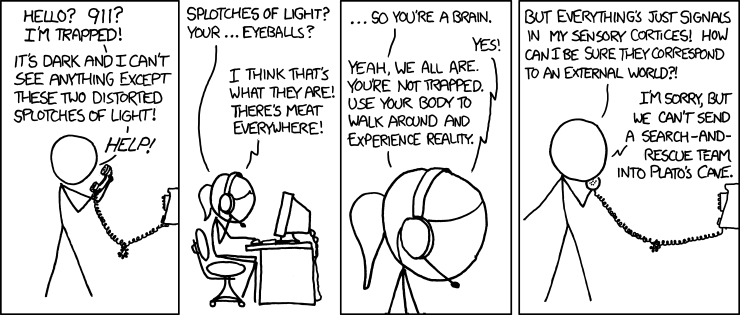 xkcd
xkcd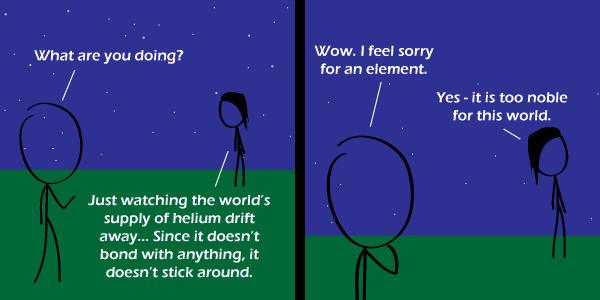 Comic JK
Comic JK The Far Left Side
The Far Left Side God Hates Protesters
God Hates Protesters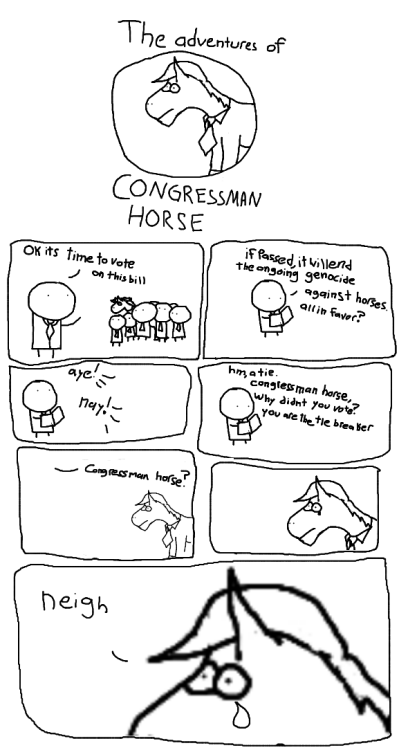 Sofa Pizza
Sofa Pizzasee more Gifs
see more Monday Through Friday
 Medium Large
Medium Large Skull Swap
Skull Swap College Humor- several more Star Wars PSA's at the link.
College Humor- several more Star Wars PSA's at the link.see more Celeb Look-A-Likes
see more Comixed
see more Hacked IRL - Truth in Sarcasm
 Blackadder
Blackaddersee more Hacked IRL - Truth in Sarcasm
see more So Much Pun
see more Lolcats and funny pictures, and check out our
 EpicPonyz
EpicPonyz The High Definite (turns out this is shopped; it was published with commas in the appropriate spots)
The High Definite (turns out this is shopped; it was published with commas in the appropriate spots)see more Lol Celebs
 What Would Jack Do?
What Would Jack Do? Fake Science
Fake Science Chuck & Beans
Chuck & Beanssee more Celeb Look-A-Likes
see more Political Pictures
 God Hates Protesters
God Hates Protesters Sober in a Nightclub... "You're a genius, Kelly."
Sober in a Nightclub... "You're a genius, Kelly." Bits and Pieces
Bits and Piecessee more Gifs
Saturday, March 26, 2011
A Geysing We Will Go
Of course, getting there is half the
 The quickest route from the Willamette Valley to the general area is to take 58 from Eugene to US 97 south of Gilchrist/Crescent. Going south on 97, a traveler would pass close by Crater Lake, making that park an easy side trip. Very nice pumice samples can be collected outside the park north of Chemult. From near Chiloquin, one can bypass Klamath Falls with the Sprague River cutoff to Rt 140, then drive east to Lakeview.
The quickest route from the Willamette Valley to the general area is to take 58 from Eugene to US 97 south of Gilchrist/Crescent. Going south on 97, a traveler would pass close by Crater Lake, making that park an easy side trip. Very nice pumice samples can be collected outside the park north of Chemult. From near Chiloquin, one can bypass Klamath Falls with the Sprague River cutoff to Rt 140, then drive east to Lakeview.Another route to or from passes through Fort Rock Valley and close by Christmas Lake Valley along Route 31. From north to south along this route, geologic features of note include:
- Hole-in-the-Ground: A maar, about a mile in diameter

- Fort Rock, a tuff ring
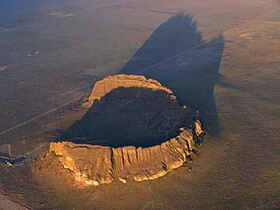
- Table Rock, A somewhat eroded, but generally beautifully preserved, tuff cone. (Picture from here; description and travel log at the link.)

- A side trip into the Christmas Lake Valley area would allow a visit to Crack-in-the-Ground,
 the Christmas Valley Sand Dunes,
the Christmas Valley Sand Dunes,  and a major source of diatomite. Diatomite is mined on a road named Kitty Litter Lane... guess what it's used for?
and a major source of diatomite. Diatomite is mined on a road named Kitty Litter Lane... guess what it's used for? - Picture Rock Pass- home of a boulder with detailed petroglyphs
- Abert Rim is frequently described as the one of the tallest fault scarps in the US- I'm dubious, nevertheless, it is seriously impressive.

















